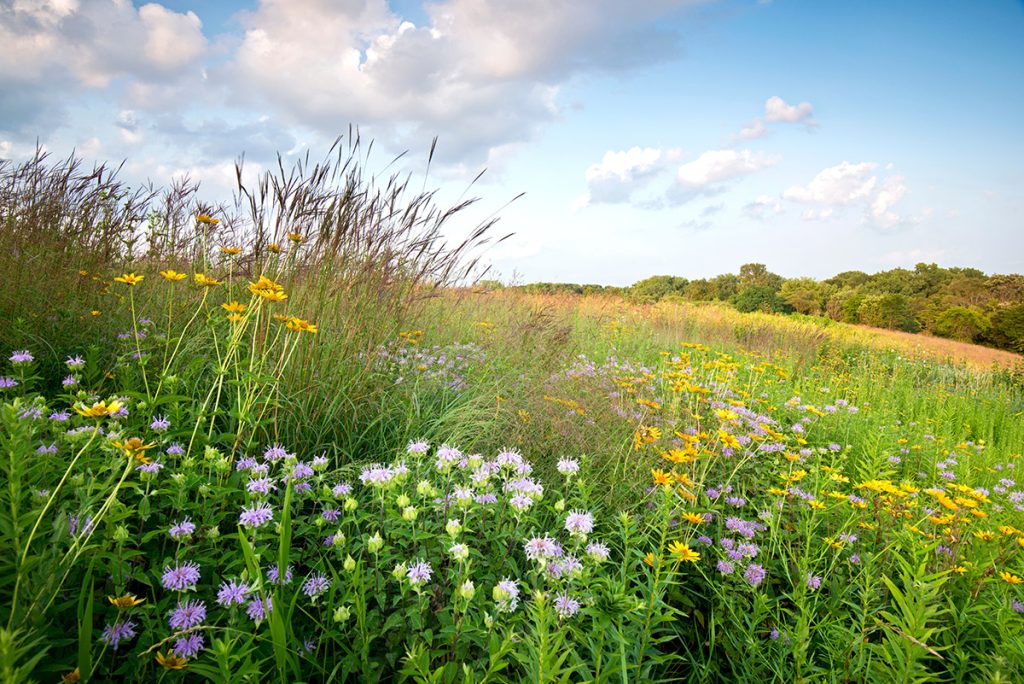
Across the United States and beyond, a quiet revolution in land management is taking root, quite literally. The resurgence of interest in establishing prairies is gaining momentum, and for good reason. Prairies are parcels of land that have been carefully cultivated to include native plants and wildflowers, while also removing any invasive species that might try to take hold. Prairies are very biodiverse and act as a haven for our pollinator friends.
Rediscovering the Prairie Heritage
Biodiversity Preservation: Prairies are biodiverse ecosystems teeming with native grasses, wildflowers, and wildlife. Restoring prairies helps conserve native plant and animal species that are often endangered or at risk due to habitat loss.
Pollinator Paradise: Native prairies are havens for pollinators like bees and butterflies. With the decline of pollinator populations, prairies provide essential habitat and food sources for these crucial species.
Carbon Sequestration: Prairies are effective at sequestering carbon, helping mitigate climate change. Deep-rooted prairie grasses lock carbon in the soil, acting as natural carbon sinks.
Scenic Beauty: Prairies offer breathtaking landscapes with their waves of tall grasses and vibrant wildflowers. Many people are drawn to their natural beauty and tranquility.
Low Maintenance: Once established, native prairies require minimal maintenance compared to traditional lawns. This can save homeowners time and money on upkeep.
Habitat for Wildlife: Prairie restoration provides essential habitat for a wide range of wildlife, including birds, mammals, and insects. These areas can be a boon for birdwatchers and nature enthusiasts.
The resurgence of interest in establishing prairies is driven by a passion for conservation, a love of natural beauty, and a commitment to sustainable land management. As more individuals and communities embrace prairie restoration, we not only preserve our natural heritage but also create a healthier and more resilient environment for future generations to enjoy. Whether you’re a homeowner, a farmer, or simply a nature enthusiast, consider joining the prairie revival – it’s a journey worth taking. If you’re interested in starting your own prairie on your farm or land, consider reaching out to professionals well versed in soil fertility and types, and who have extensive knowledge of the plant species and seeds that would be best for your region. There are also many resources available online such as Iowa State University’s Prairie Restoration – Habitat Headquarters to learn more information and to get a rundown of what to expect when cultivating your prairie.
